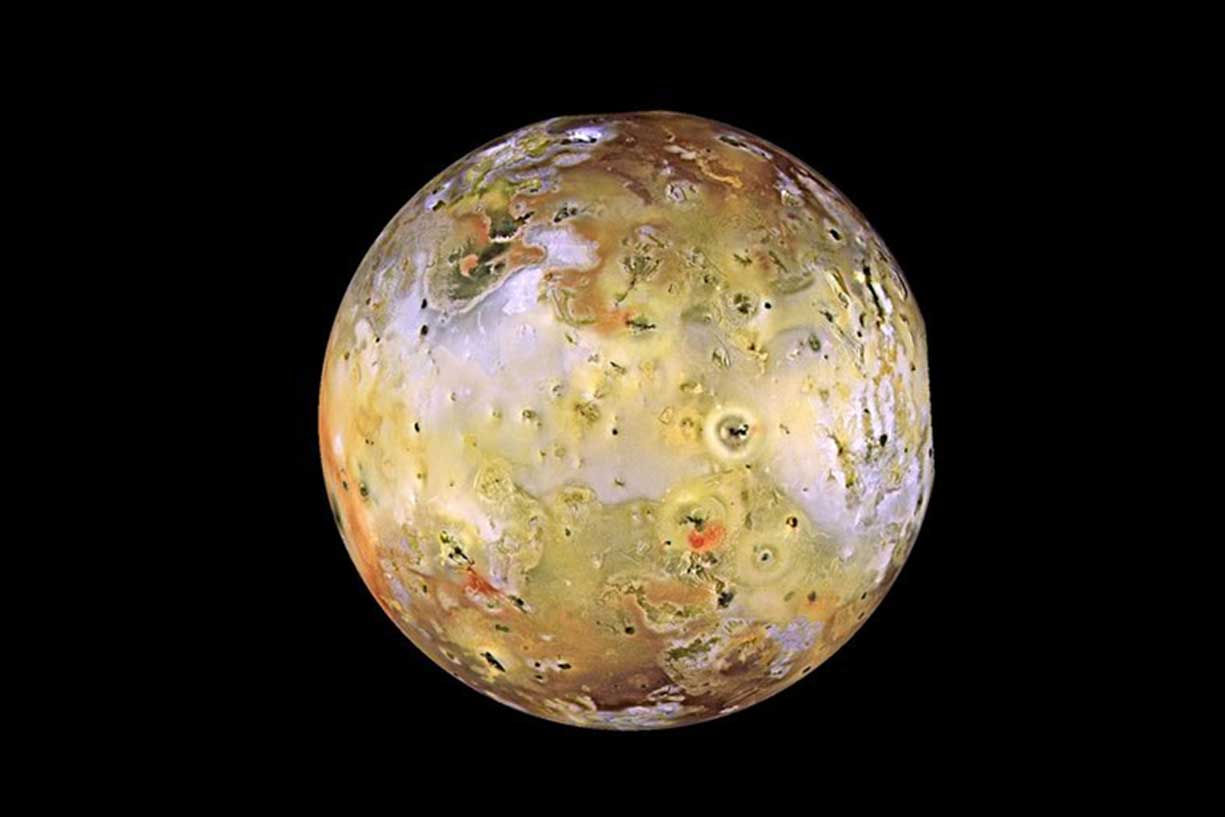
Io, Europa and Ganymede are Jupiter's moons. Because of the gravitational pull between these moons, their orbits are elliptical rather than circular. In such orbits, Jupiter's gravity heats the moons' interiors, contributing to Io's volcanism and warming the liquid ocean beneath Europa's frozen surface.
How long has there been volcanic activity on Io?
Jupiter's moon Io is the most volcanically active place in the Solar System, according to a recent study by a team of planetary scientists and geologists from NASA Goddard Space Flight Center, University of California Santa Cruz, New York University and the California Institute of Technology. . It has been volcanically active for billions of years – almost 4.5 billion years.
The scientists measured isotopes of sulfur found in Io's atmosphere. Io's presence of volatile chemical elements, such as sulfur and chlorine, has an isotopic composition that records its evolution by reflecting its history of mass loss and expulsion.
They also discovered that the moons Io, Europa and Ganymede have been oscillating for billions of years in a vibrational dance known as the Laplace Resonance.
Scientists analyzed chemicals in the Jovian moon's atmosphere to determine the duration of volcanism.
Because Io does not have enough water, sulfur is the most common material emitted from its volcanoes. Sulfur compounds make up 90% of the sulfur dioxide atmosphere. Gases close to the surface are reabsorbed into the interior and re-emitted into the atmosphere throughout Io's dynamic volcanic cycles.
Another fact is that Io has many isotopes or sulfur atoms. Heavier isotopes are closer to the Moon's surface, at the bottom, whereas lighter isotopes are more likely to be at the top.
Jupiter's atmosphere and surface are leaking into space at a rate of 1 ton per second as charged particles collide with its magnetic field. The less sulfur isotope, sulfur-32, is depleted proportionally to its heavier number because it is higher in the upper atmosphere, where these collisions occur. Determining the amount of sulfur-free light can provide information about how long the moon was volcanic.
To achieve this, scientists measured sulfur isotopes in Io using the ALMA (Atacama Large Millimeter/Submillimeter Array) telescope in Chile, surrounded by volcanoes.
For every atom of sulfur-34 formed during the formation of the solar system, there are about 23 atoms of sulfur-32. If it had not changed since then, Io would have the same ratio now. According to a recent study, the Moon has lost 94 to 99 percent of its original sulfur, indicating that it has been volcanically active for billions of years, while continuously losing sulfur to space.
The length of Io's volcanism suggests that the moon formed relatively soon after Europa and Ganymede locked into an orbital resonance. According to simulations that have been running for the past twenty years, the Galilean moons – Io, Europa and Ganymede – should reach these vibrations much earlier after their formation, confirming those predictions.
said Kathryn de Kleer, assistant professor of planetary science and astronomy and Hufstedler Family Scholar. „The Jovian system is one of the many examples of moons, and even exoplanets, that undergo these types of vibrations. The tidal heat generated by such vibrations is a major heat source for moons and powers their geological activity. This is a very extreme example, so we use it as a laboratory for understanding tidal heating in general.
Scientists have created a sophisticated model of Io's sulfur system in a study. This allows them to determine possible scenarios of the Moon's history, some in which Io was more volcanically active in the past than it is today.
Former Caltech Postdoctoral Scholar Erie Hughes said, „Because there is not a lot of light sulfur, the atmosphere we measure today is relatively 'heavy' in terms of sulfur. The key to achieving such heavy sulfur in Io's atmosphere is to bury the heavy sulfur back into Io's interior so that the volcanoes can release it repeatedly.
„Our modeling shows that sulfur is trapped in Io's crust by reactions between sulfur-rich frosts deposited from the atmosphere and magma, allowing it to eventually be buried in Io's interior.”
Scientists also plan to learn what gases Io may have lost over its long operating history.
Press Notes:
- Erie Hughes, John Ayler and others. Isotopic evidence of long-term volcanism on Io. Science. DOI: 10.1126/science.adj0625
- Ery Hughes, de Kleer, and Eiler et al. Understanding the history of tidal heating using Io's sulfur isotope cycle. JGR-Planets. DOI: 10.1029/2023JE008086

„Oddany rozwiązywacz problemów. Przyjazny hipsterom praktykant bekonu. Miłośnik kawy. Nieuleczalny introwertyk. Student.
